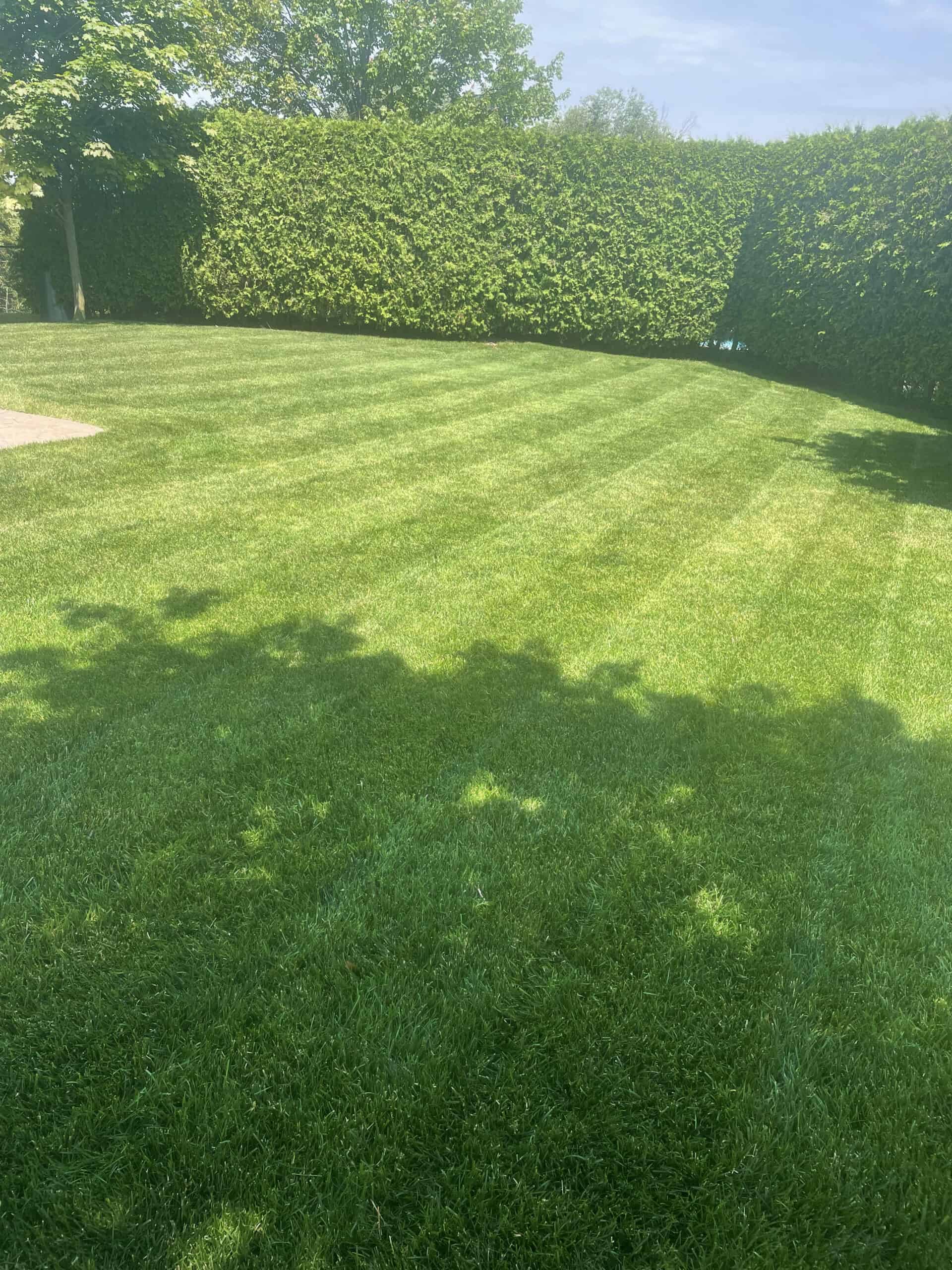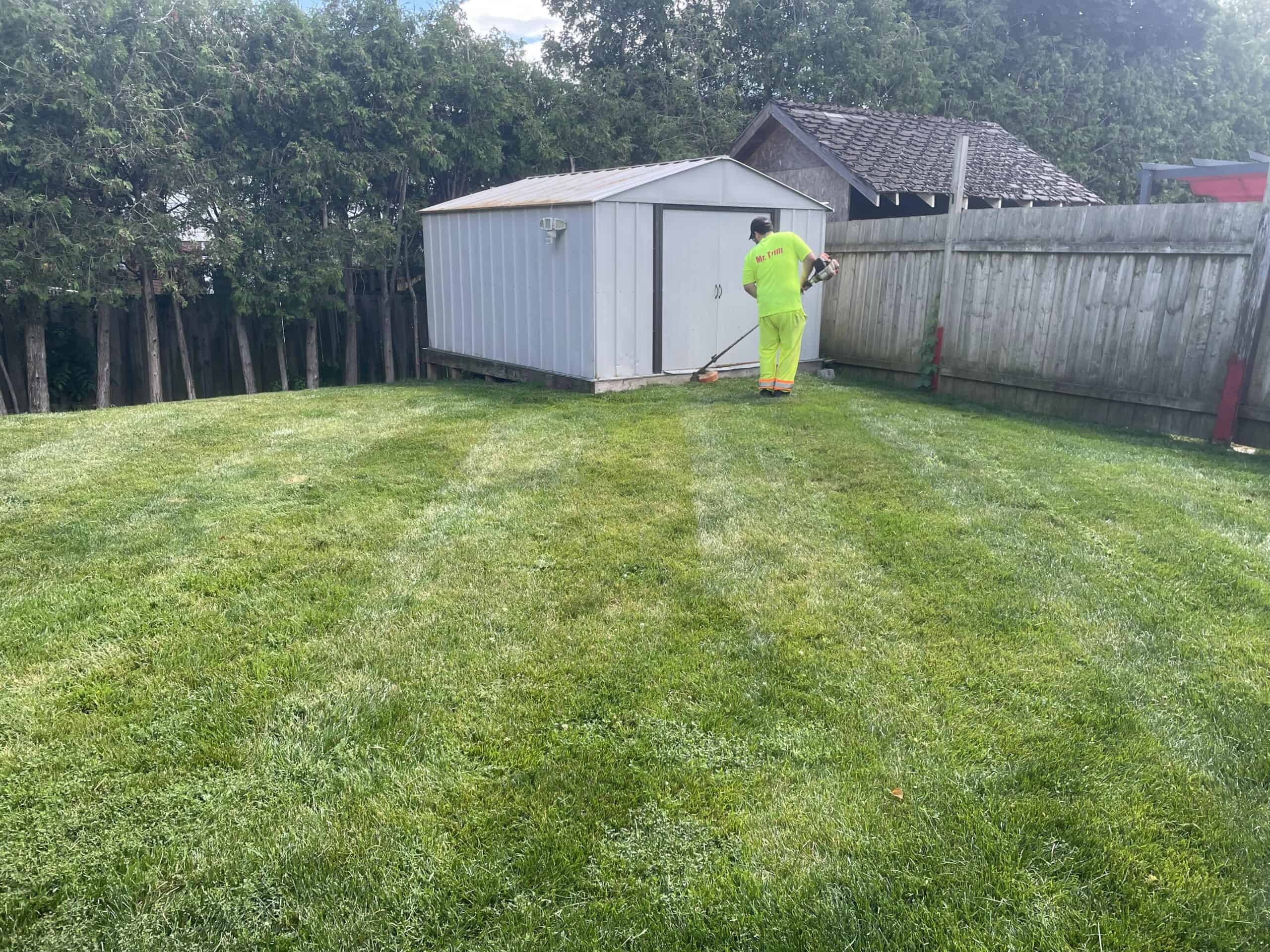Lawn Fertilization: Facts Homeowners Need to Know
Call Now
A maintained lawn stands alone on every property, contributing to the surrounding beauty and value. However, achieving that perfect-looking lush lawn requires more than just regular mowing and the occasional fertilization. The good news is that many homeowners unknowingly fall into some very common mistakes of caring for their lawns, hindering the health and appearance of their lawns and affecting most lawn owners. To help you avoid these mistakes and maintain a lawn that's as healthy as possible, we've created a short guide on the most prevalent lawn mowing and fertilization mistakes to avoid.
Common Fertilization Mistakes
Most homeowners do not handle fertilizer often, so they may have more trouble during application. Here are a few common fertilizer mistakes:
Over-Fertilization
While fertilizing is essential for feeding your lawn nutrients, overuse and frequent use can be harmful. Excessive fertilization leads to "fertilizer burn," meaning the grass becomes scorched due to a high concentration of nutrients and salts. It can also contaminate local bodies of water as excess fertilizer may run off during rain. Fertilizer burn is noticeable and will appear as yellow patches and dead-looking grass. Follow a proper fertilization schedule and use the recommended fertilizer for your lawn's needs.
 Incorrect Timing
Timing is also crucial when it comes to fertilization of your lawn. Applying fertilizer at the wrong time can lead to ineffective absorption and wasting the product, while applying fertilizer too early in the spring, for instance, can prompt quick growth that can be vulnerable during late-month temperature drops. On the other hand, waiting too late in the season to fertilize can lead to weak grass going into the winter months. Be sure to research the times to begin fertilizer with your local weather.
Common Lawn Mowing Mistakes
A beginner, or even someone with more experience mowing than others, faces many issues they may not even know are a problem. Unless you are working with high-quality machines and have knowledge of mowing, you may not get each cut right each time. Here are some common lawn mistakes to avoid, especially during this season.
Mowing Too Short
One common mistake homeowners make is cutting their grass too short consistently. While the idea of a closely trimmed lawn may look appealing visually and be a desired aesthetic to some homeowners, it can lead to multiple problems. Cutting the grass too short or too often stresses the plants, weakens their roots, and exposes the soil to sunlight, facilitating the opportunity for weed growth. While mowing height varies by grass type and climate, consider a general rule of thumb — never cut more than one-third of the grass blade's length at once. Grass cut too short often can lead to patching, thinning grass, and soil damage in different areas across the lawn.
Irregular Mowing Patterns
Your mowing pattern might seem inconsequential, but it can significantly impact your lawn's health, especially if you do all your lawn work and care. Mowing in the same direction every time can cause the grass to lean the opposite way and grow in that direction, leading to an uneven cut. Uneven grass growth may seem minor, but it is very noticeable. Also, repeatedly driving or walking/running over the same grass areas can compact the soil, disrupting water and nutrient absorption. Switch up your mowing pattern each time you cut the grass, and be mindful of heavy machines or foot traffic over your lawn to avoid significant damage.
Incorrect Timing
Timing is also crucial when it comes to fertilization of your lawn. Applying fertilizer at the wrong time can lead to ineffective absorption and wasting the product, while applying fertilizer too early in the spring, for instance, can prompt quick growth that can be vulnerable during late-month temperature drops. On the other hand, waiting too late in the season to fertilize can lead to weak grass going into the winter months. Be sure to research the times to begin fertilizer with your local weather.
Common Lawn Mowing Mistakes
A beginner, or even someone with more experience mowing than others, faces many issues they may not even know are a problem. Unless you are working with high-quality machines and have knowledge of mowing, you may not get each cut right each time. Here are some common lawn mistakes to avoid, especially during this season.
Mowing Too Short
One common mistake homeowners make is cutting their grass too short consistently. While the idea of a closely trimmed lawn may look appealing visually and be a desired aesthetic to some homeowners, it can lead to multiple problems. Cutting the grass too short or too often stresses the plants, weakens their roots, and exposes the soil to sunlight, facilitating the opportunity for weed growth. While mowing height varies by grass type and climate, consider a general rule of thumb — never cut more than one-third of the grass blade's length at once. Grass cut too short often can lead to patching, thinning grass, and soil damage in different areas across the lawn.
Irregular Mowing Patterns
Your mowing pattern might seem inconsequential, but it can significantly impact your lawn's health, especially if you do all your lawn work and care. Mowing in the same direction every time can cause the grass to lean the opposite way and grow in that direction, leading to an uneven cut. Uneven grass growth may seem minor, but it is very noticeable. Also, repeatedly driving or walking/running over the same grass areas can compact the soil, disrupting water and nutrient absorption. Switch up your mowing pattern each time you cut the grass, and be mindful of heavy machines or foot traffic over your lawn to avoid significant damage.
 The Importance of Proper Lawn Care
Now that you know the most common lawn care and mowing mistakes, here is an example of the correct lawn mowing and fertilization practices. By following these expert tips, you can properly maintain and enhance your property's curb appeal. To maintain a healthy lawn, mow regularly but ensure not to cut more than one-third of the grass height at once. This simple practice will promote strong root growth and lessen the chance of weed infestations. Remember to change your mowing pattern during each session to prevent uneven growth and compacted soil. When it comes to lawn care and the proper timing, choose a high-quality fertilizer that matches your grass type and closely follows the recommended application amount. Consider a slow-release fertilizer for a consistent application each time.
Timing is key; fertilize during the growing season, according to your local area and grass type's condition. Be sure to water your lawn after fertilization to help nutrients penetrate the soil.
The Importance of Proper Lawn Care
Now that you know the most common lawn care and mowing mistakes, here is an example of the correct lawn mowing and fertilization practices. By following these expert tips, you can properly maintain and enhance your property's curb appeal. To maintain a healthy lawn, mow regularly but ensure not to cut more than one-third of the grass height at once. This simple practice will promote strong root growth and lessen the chance of weed infestations. Remember to change your mowing pattern during each session to prevent uneven growth and compacted soil. When it comes to lawn care and the proper timing, choose a high-quality fertilizer that matches your grass type and closely follows the recommended application amount. Consider a slow-release fertilizer for a consistent application each time.
Timing is key; fertilize during the growing season, according to your local area and grass type's condition. Be sure to water your lawn after fertilization to help nutrients penetrate the soil.

Aaron grew up in Bowmanville, working along side his dad for as long as he can remember. Aaron went to school to get his small engine repairs certificate to help keep all the machines running well. Aaron is very knowledgeable with all lawn care needs. He took and passed the pesticide license course so he could better help his customers. Aaron always makes sure to determine what your lawn needs and can give recommendations on how to make it better.
Mr. Trim has many awards from, three best rated, This Week Readers Choice, Durham Region Readers Choice and more. Both owners Lisa & Aaron have their pesticide licences. Their biggest accomplishment of all is having loyal customers that trust them year after year for all their lawn, garden and snow clearing needs.
